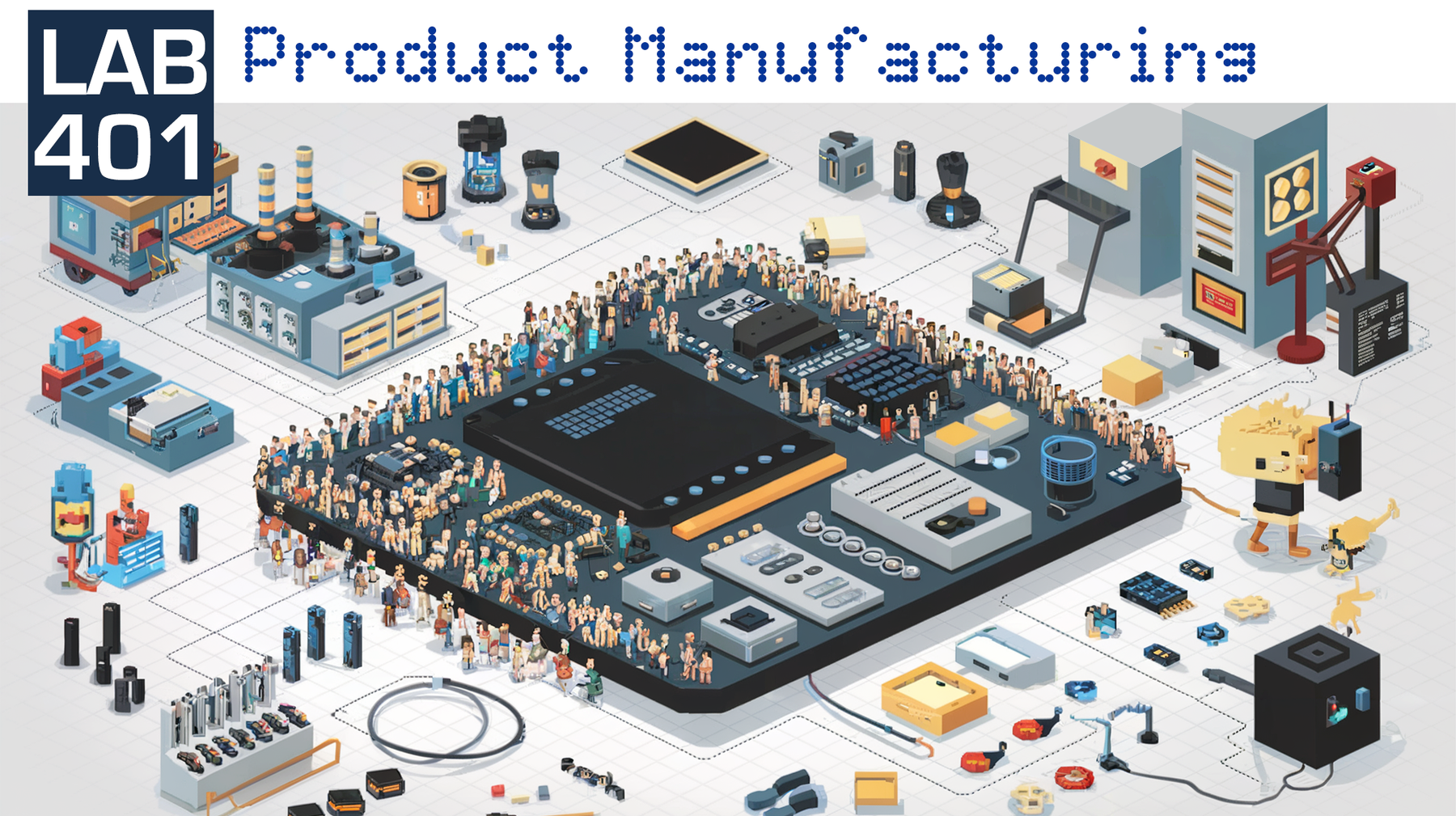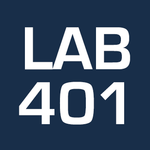Scroll Indicator

Product Manufacturing with Lab401
So you want to make a product
Ever since its launch, we were excited about the possibilities for accessories and expansion boards for the Flipper Zero. A few years later, we were slightly surprised that there hadn't been the explosion of weird and wonderful accessories that we'd imagined.
And so, we decided to build our own family of accessories for the Flipper Zero.
As we launch our first accessory (a persistence of vision / light painting accessory),(and are getting to ready to launch the next device, we thought it would be interesting to pull back the curtain on our experience imagining, designing, debugging and producing our very own accessories.
In this series:
- Part One : So you want to make a product (this post)
- Part Two : Building the LightMessenger product
Product Metric
Before heating up the soldering iron or ordering rolls of components, we wanted to examine why we wanted to build accessories, what we wanted to achieve with the devices, and what our definition of "success" would be for each product.
We used this to build a "Product Metric" - a series of core characteristics that each potential product must meet to ensure a "successful" product.
-
Clearly defined, unique use-case
Each product must have a rapidly identifiable use, which is immediately obvious to our target audience. Ideally, we should be able to explain "What it does" or "why it exists" in under 10 words or 10 seconds.
-
Work out of the box
The product must work "out of the box". The user shouldn't have to solder, code or fight to get the product working. Downloading an app and upgrading Flipper Firmware is acceptable, as these well-known procedures to the majority of Flipper users.
-
Expandable
The product needs to be open-source, and provide a hardware, firmware and software framework that allows for easy expansion. The device should also have several immediately obvious ways on which it could be expanded.
- Educational
If the user wishes, the device should be able to teach them something, or be useful in the process of learning something.
Product Roadmap
With this Product Metric defined, the next step was to define our Product Roadmap - the steps that we'd have to take to transform idea into a product in the hands of a user.
Conceptualisation
This step should answer the following questions:
- What does this product do?
- Why does it exist?
- Who will use it?
- What is its primary use/s?
- How much should it cost?
- Which features are required for a Minimum Viable Product ?
- Which features are out of scope for a first iteration?
Specification
The result of the Specification step is a Specification Document, that will provide the roadmap to building the device. The document should be exhaustive, breaking each element of Hardware, Firmware and Software into their smallest logical elements.
The development team should be able to take this document and have a full list of logical tasks that will serve them as a guide to building, testing and completing the product.
We find the Specification Document really useful to combat "Scope Creep". It's very easy to add extra features during development, which can cause timelines to blow-out. Likewise, sometimes the last 10% of a project seems impossibly slow. In this circumstances, it's very useful for everyone to be able to refer to the Specification Document to get back on track.
Implementation
This is the building phase. The developer/s take the Specification Document, and break it down into logical modules, and then build each module. This can be informal (list of post-its on the wall) or very formal (Sprints, Agile, etc).
We include the following phases in Implementation:
a. Building
b. Prototyping
c. Testing
d. Debugging
e. Documentation
Steps a - e are iterated as many times as necessary to have a final working product.
Production
At this point, you've got a fully working, fully documented prototype. It's time to mass-produce! In our experience, the more time invested pre-production, the smoother the process will be. Although it's exciting to push the button, it's also the Point of No (Easy) Return.
From here on rapid iteration is finished. Errors, changes and miscommunications are costly in terms of time and money - and may even kill your project before it even launches.
Depending on your device, at this point your project will probably need a few elements to become a finished product in a box, waiting to be sent to your adoring fans:
- Electronics Preparation
- Firmware/Software Preparation
- Packaging Preparation
- Compliance Preparation
More likely than not, you'll need to find partners or factories for the above steps.
Typically these tasks can be placed in parallel, but some rely on each other.
For example: If your device needs to have firmware flashed, you need to have the firmware ready to provide to the PCB / PCBA factory.
Production challenges and risks could easily fill their own article - but below is a quick list list of lessons that we learned the hard way over the years:
Component Choice
Your choice of key components, specifically critical components such as micro-controllers will may end up controlling or killing your production choices.
Select components that are convenient for your manufacturer / in the country that you want to manufacture in. Ensure that they're not subject to export bans or excessive tarifs. Ensure that they are not End of Life, or soon to be End of Life.
Minimize / Optimise Packaging
It's very tempting to go crazy on packaging.
In our experience, unless the packaging is an integral part of the device (IE, a case that will last the lifetime of the product) - simple and smallest is best.
The final price of a product can rapidly increase due to packaging, but not necessarily adding value to the product.
Minimising the physical size of packaging is important. If the box is too large, it may not longer be eligible to be shipped in an envelope / charged extra. Likewise, logistics companies charge by _volumetric weight_ : you'll be paying extra for what is essentially empty space.
Finally - most packaging is destined for landfill. Consider using unbleached, recyclable cardboard boxes, and soy-based black ink instead of full-colour inks.
When you're manufacturing, you're participating in product and waste creation. Take a moment to think about what's important for you, the environment, and your customers.
SOP / QC
Write an exhaustive, step by step QC Standard Operating Procedure Document for your product.
If you can, arrange for / supply a schematic for a Testing Jig, to ensure 100% QC testing for your products.
Building an exhaustive document is important for multiple reasons:
- Your customers will get a working product
- Rejected products can be triaged by problem and potentially reworked or repaired
- Recurring problems can be identified and resolved
- Forces you to ensure that all aspects of the product have been rigorously tested
- Removes room for error or interpretation during product assembly and testing.
- Resolving disputes with data instead of emotion
Certification
Determine if your product needs to have certifications: FCC, UKCA, CE, RoHS..
If your product contains batteries - you'll more than likely need UN3481 certifications for transport (between the factory and your warehouse, and between your warehouse and your customers).
If your device contains radio elements, you'll probably also need additional certifications (IE, FCC, etc).
As with the manufacturing steps - it's important to select factories, components and suppliers that offer pre-certified components. For example, make sure your battery supplier already has certification for their batteries - otherwise your products might never leave the factory!
In the end, you need to ensure that all elements of your product are compliant with the jurisdictions in which you plan to sell the product.
Remember - products that are legal in one country may be wildly illegal in another. For example: a laser pointer that is legal America is probably classified a a firearm in Australia.
Distribution
Depending on your project's goals, distribution may or may not important. For the accessories we're developing, distribution is a critical part of the flow. While we can rely on our internal distribution, we also have resellers and partners.
You can only launch a product once - coordination with key partners to ensure that they have stock pre-launch is very important.
Promotion
Once the product is released, people need to know about it. However, there's a fine line between educating an audience about the availability of a product that may be of interest and annoying your loyal customers.
In Part Two of this series, Building the LightMessenger product we deep dive Lab401's first ever accessory for the Flipper Zero - the Light Messenger.
With read developer interviews, check out the concept art and build log from conception to production - it's an in-depth behind the scenes guide on how we made our first accessory.

Leave a comment